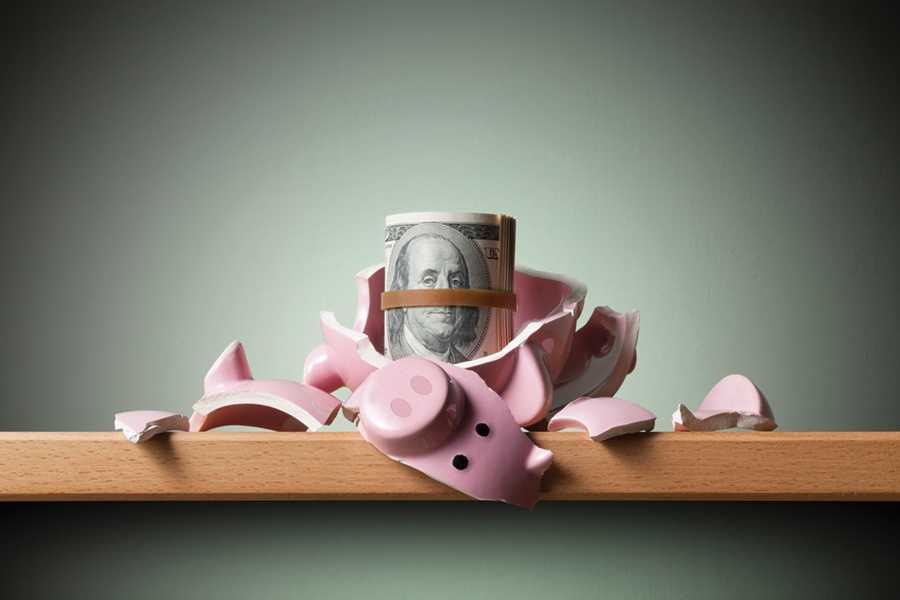

A new study by Empower reveals many Americans on the financial edge, with 37 percent of people surveyed saying they’re unable to cover an unexpected expense exceeding $400.
According to the newly published research report titled “In Case of Emergency,” roughly a fifth (21 percent) of Americans have no emergency savings whatsoever.
"Not all surprises are good, and people know it. The study suggests financial precarity at a time when household finances may be stretched due to rising prices and inflation," Rebecca Rickert, head of communications at Empower, said in a statement. "Life happens, and people are stressed about the surprise expenses that could tip them off-balance."
The study found that one in four individuals, or 25 percent, had to use emergency savings to cover basic living expenses in the past year. The median amount of emergency savings for Americans stands at $600, with men holding a median of $1,000 compared to $500 for women.
A majority of the population recognizes the importance of having emergency savings, with 62 percent indicating it as a priority. However, financial stress is rampant, with 54 percent expressing concerns about their ability to cover unexpected expenses. This worry is most pronounced among Millennials, with 60 percent reporting stress over potential emergencies.
The study also points to a link between relationship status and financial anxiety as more single adult respondents (58 percent) said they worry about insufficient emergency savings compared to married individuals (46 percent).
Not surprisingly, inflation and rising costs are major obstacles to building emergency funds for 57 percent of Americans this year. Nearly half, or 47 percent, find that regular monthly expenses are too high to save money. High credit card balances are another challenge, with 57 percent of Americans prioritizing debt repayment over saving for the unexpected.
Amid that challenging climate, 30 percent have depleted their rainy-day savings and have been unable to replenish the funds, while 40 percent have not added to their funds for emergencies in over a year.
Despite these difficulties, 43 percent of Americans, including 51 percent of Baby Boomers, have added to their emergency funds within the past year. Among savers, 32 percent contribute sporadically when they have extra income, 14 percent save regularly, 14 percent include it in their monthly budget, and 11 percent rely on automated contributions.
The study also revealed a ray of hope for Americans, with one-third of respondents (34 percent) saying they could cope with an unexpected expense.
The survey also reaffirmed the value of advice in encouraging saving, with 20 percent reporting that they work with financial advisors to set savings goals. That trend was driven by younger Millennial (32 percent) and Gen Z (31 percent) investors, with much weaker adoption among Baby Boomers (9 percent) and Gen Xers (11 percent).

The looming threat of federal funding cuts to state and local governments has lawmakers weighing a levy that was phased out in 1981.

The fintech firms' new tools and integrations address pain points in overseeing investment lineups, account monitoring, and more.

Canadian stocks are on a roll in 2025 as the country prepares to name a new Prime Minister.

Carson is expanding one of its relationships in Florida while Lido Advisors adds an $870 million practice in Silicon Valley.

The approval of the pay proposal, which handsomely compensates its CEO and president, bolsters claims that big payouts are a must in the war to retain leadership.
RIAs face rising regulatory pressure in 2025. Forward-looking firms are responding with embedded technology, not more paperwork.
As inheritances are set to reshape client portfolios and next-gen heirs demand digital-first experiences, firms are retooling their wealth tech stacks and succession models in real time.
